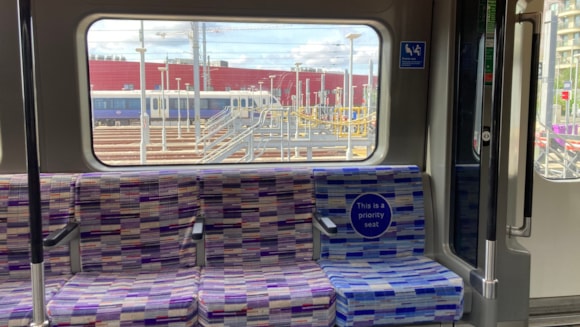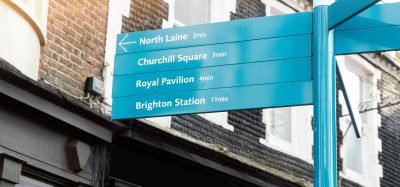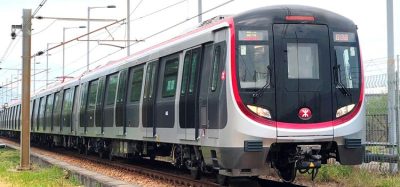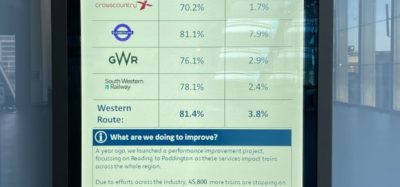TfL launches new priority seat design and urges passengers to be mindful of hidden disabilities
Posted: 29 April 2025 | Gabriel Higgins | No comments yet
TfL introduces clearer priority seating across the network and encourages passengers to consider those with non-visible health conditions.


Credit: Transport for London
Transport for London (TfL) is marking its seventh annual Priority Seating Week with a campaign to encourage passengers to be more aware of those who may need a seat, including people with non-visible disabilities. As part of this, a new Elizabeth line priority seat design with improved colour contrast is being introduced, making priority seats easier to spot and more accessible for passengers, especially those with visual impairments.
Details in TfL’s priority seating
New signage stating “This is a priority seat” will be rolled out across the TfL network. The design retains the familiar striped pattern of the Elizabeth line but switches from purple to blue for clearer visibility. The new design will also appear on DLR, Piccadilly line and refurbished Central and Waterloo & City line trains.
Seb Dance, Deputy Mayor for Transport, said: “Making the public transport network accessible for all is a top priority for the Mayor… Not all disabilities are visible… we’re asking all Londoners to keep this in mind, and offer their seat to those who may need it more than them.”
TfL will run announcements across the network—including buses, DLR, London Overground, Underground and Elizabeth line—along with posters, customer emails and social media content using the hashtag #TfLTravelKind. Staff will engage passengers at station stalls and distribute ‘Please offer me a seat’ badges.
Mark Evers, TfL’s Chief Customer Officer, added: “Our new seat design will make it much more obvious to customers which seats are priority seats… Disabilities and health conditions can affect absolutely anyone… We know that Londoners are compassionate and understanding.”
TfL has issued over 152,000 ‘Please offer me a seat’ badges since 2017, expanding the scheme last year to cover all UK addresses. Research shows many customers who need a seat do get one, though non-visible disabilities are often overlooked. These include chronic pain, respiratory conditions, diabetes, mental health issues, autism and neurodivergence.
Allison Peter, Deputy Chair of TfL’s independent Disability Advisory Group (IDAG), said: “Priority seats… play a vital role in enabling people to travel with confidence… By looking up, offering our seat, and being mindful of non-visible disabilities, we can help to make public transport more accessible.”
TfL continues to expand accessibility across its network. Step-free access has now been introduced at Knightsbridge station—TfL’s 93rd step-free Tube station—and new accessible toilets have opened at White Hart Lane and will soon open at Seven Sisters. Stations including Amersham, Clapton and Morden are next in line for upgraded toilet facilities.
Kate Brackley from the British Institute of Learning Disabilities said: “We would like to be the same as everyone else… we don’t want to feel stressed if there is no seat available for us.”
Michael Roberts, CEO of London TravelWatch, praised the initiative, saying: “Anything that reminds passengers to give up their seat… is very welcome.”
TfL is celebrating 25 years of transforming London’s transport network with continued commitments to accessibility and inclusion, supported by its Equity in Motion customer inclusion plan.
Related topics
Crossrail/Elizabeth line, Digitalisation, Passenger Experience/Satisfaction, Passengers With Reduced Mobility (PRM), Station Developments, The Workforce
Related organisations
British Institute of Learning Disabilities (BILD), London TravelWatch, Mayor of London, TfL’s independent Disability Advisory Group (IDAG), Transport for London (TfL)
Related regions
Related people
Allison Peter, Kate Brackley, Mark Evers, Michael Roberts, Seb Dance








